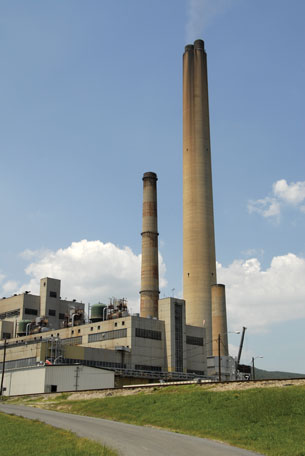Module 3
1. Module 3
1.46. Page 6
Module 3—Electrical Phenomena
 Reflect and Connect
Reflect and Connect

© Mark Winfrey/shutterstock
The engineers who design electrostatic precipitators for coal-fired generating stations have to balance the need to significantly reduce the particulate matter that enters the air with the need to run the units efficiently. Since the electric fields within the units are sustained by high-voltage sources, it makes sense to create a design that effectively removes the particulate matter using the minimum amount of electrical energy. Keep these ideas in mind as you answer the following questions.

 Try This
Try This
TR 1. The electric field between the negatively charged rods and the positively charged plates of an electrostatic precipitator has to be strong enough to generate negatively charged ions that can be picked up by the particles in the flue gas. If the field is not strong enough, then the some of the particles might remain uncharged while in the electrostatic precipitator. Explain the outcome for a microscopic bit of coal dust within the electrostatic precipitator if it remains uncharged.
TR 2. A key consideration for the design engineers is the speed of the particles within the flue gas. The faster the charged particles move, the more difficult it is to deflect them toward the collector plates.
- Produce a simple sketch to illustrate why it is more difficult to deflect a fast-moving charged particle than a slow-moving charged particle in a given electric field. Assume that each particle has the same mass and charge.
- Identify two reasons why increasing the strength of the electric field within the electrostatic precipitator makes it easier to deflect the particles in the flue gas.
- Explain why it is easier to deflect particles within the flue gas to the collector plates if the collector plates are kept close together and made as long as possible.
- Post your solutions to the discussion area. Read some of the other solutions from other students. Choose which of the solutions from the postings is best and identify why you think so.
 Module 3: Lesson 6 Assignment
Module 3: Lesson 6 Assignment
Remember to submit the answers to your assignment questions to your teacher.